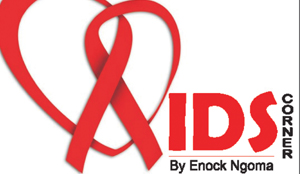 THE statistics of AIDS are startling. Since 2000, more than 38 million people have become infected with HIV; 25 million people have died of AIDS-related illnesses. AIDS is one of the leading causes of death worldwide; in fact, it is the leading cause of death for women of reproductive age in low and middle-income countries.
THE statistics of AIDS are startling. Since 2000, more than 38 million people have become infected with HIV; 25 million people have died of AIDS-related illnesses. AIDS is one of the leading causes of death worldwide; in fact, it is the leading cause of death for women of reproductive age in low and middle-income countries.
However, there is one number that is even more startling. Out of 37 million people estimated to be living with HIV, 19 million do not know their status. In other words, one out of every two people living with HIV does not know that they are HIV-positive and, therefore, does not access treatment.
Most new infections come from people who do not know their status. Knowing your status and having access to treatment can immediately improve your health and reduce the risk of onward transmission.
There are 15 million people around the world accessing treatment for HIV, 8.1 million of them through programs supported by the Global Fund. Today, AIDS is no longer a death sentence: with proper medical care, an HIV-positive person can expect to have the same lifespan as someone who is not infected.
Treatment for HIV consists of antiretrovirals (ARVs), a type of medication that stops the virus from replicating within the body and helps prevent the breakdown of the immune system. ARVs have another benefit: in addition to treatment, they also help prevent the transmission of the virus.
Studies have shown that people on ARV therapy reduce their chances of transmitting the virus by 97 percent.
There are four primary modes of transmission for HIV:
through a transfusion of infected blood;
through the sharing of infected needles;
through the exchange of bodily fluids, as in sexual intercourse; and from mother to child during pregnancy and birth.
Prevention strategies implemented by countries have led to a 35 percent reduction in new infections since 2000.
Facing Up to AIDS
Facing up to AIDS begins by talking. Talking about the disease, talking about how to prevent it, talking about those who are living with it – and talking about sex. Admittedly, this is not easy in any society. But not talking about AIDS allows the growth of fear and prejudice.
Because of the stigma surrounding the disease and those living with HIV, many people lack basic knowledge about the disease.
Even when they have some knowledge, they are afraid to get tested. Stigma and discrimination also prevent people from accessing health services meaning that not only do they not benefit from treatment, but they also continue to spread the disease.
(“We must continue to speak up openly about AIDS. No progress will be achieved by being timid, refusing to face unpleasant facts. or prejudging our fellow human beings. In the ruthless world of AIDS, there is no us and them…And in that world, silence is death.)” – Kofi Annan, former UN Secretary-General
•Education
Preventing the spread of HIV begins with education. Education is the best tool for fighting stigma and discrimination. Educating the public through awareness campaigns coupled with one-to-one knowledge sharing has proven to be effective. In many countries, AIDS education is not only integrated into the school curriculum but is supported by peer counseling – youth who are trained in sharing information with their peers.
Education efforts also focus on encouraging behavior change, such as a reduction in the number of sexual partners, increased use of condoms, and delaying the start of sexual activity.
There is another sense in which education plays a key role. Globally, young women between the ages of 15 and 24 are most vulnerable to becoming infected with HIV.
Infection rates for adolescent girls and young women are double those for young men in the same age group. Education, however, has an impact: there is strong evidence to show that keeping adolescent girls in school reduces HIV infection rates.
•Prevention
There are a number of effective tools to prevent the transmission of HIV. Harm reduction services for people who inject drugs, for example.
The distribution of condoms for the prevention of sexual transmission is another. But one of the most effective and impactful prevention strategies is PMTCT, the prevention of mother-to-child transmission of HIV (PMTCT).
By working closely with communities to ensure that all pregnant women receive adequate antenatal care, testing for HIV, and ARVs where needed, as well as support after birth, we can get closer to an AIDS-free generation.
•Key populations
Data gathered over the last decade suggest that HIV is becoming increasingly focused among and within key populations, which includes men who have sex with men, prisoners, sex workers, youth, migrants and people who inject drugs, among others.
At the same time, these are the populations least likely to access services, whether it is because they experience discrimination at the hands of health care providers or because services simply are not available within a reasonable distance.
In order to defeat AIDS, resources need to be directed to the populations at greatest risk of infection. Strategies rooted in a human rights-based approach are needed in order to reach out to these populations.
For comments write to knoxngoma@gmail.com or call or text +260955883143






